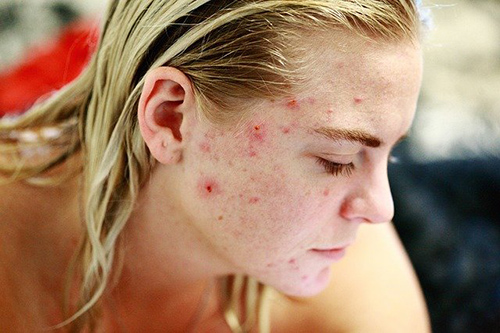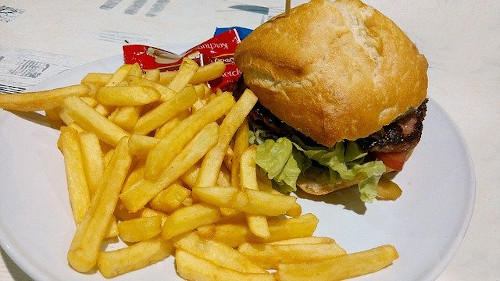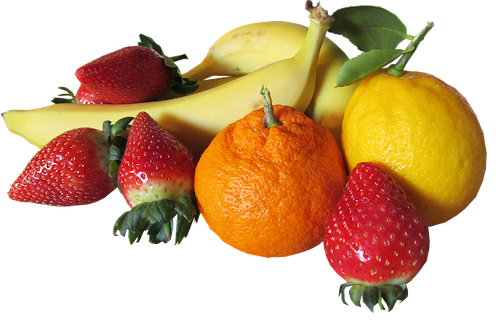Before we get into the foods that cause acne, let’s learn more about this condition. Acne or pimples are small, localized swellings on the skin which frequently become infected. Pimples generally appear during adolescence and clear up after maturity is complete. However, some appear at various times and may continue into adulthood. Most commonly occurring on the face, they may also appear on the neck, chest, back, buttocks, arms, and thighs. About 80 percent of teenagers experience some degree of acne, while 20 percent suffer from the more severe form.

The oil or sebaceous glands of the skin secrete a material (sebum) that lubricates the skin. During adolescence, the testes and ovaries secrete the male hormone (testosterone) in larger amounts. This stimulates increased production of sebum. The hair follicle into which the sebum is secreted bulges, and if the outlet is plugged a “whitehead” forms. Melanin is present and appears as a “blackhead”. If the material becomes infected, inflammation around the hair follicle occurs, pus may form, and a full-blown pimple develops.
This condition manifests itself most frequently during adolescence. These are its causal factors”
- Genetics
- Hormones, particularly androgens, are responsible for masculinization.
- Emotional stress.
- A diet that is poor in fruit, nuts, grains, legumes, and vegetables and rich in refined products, animal fats, and additives. A typical diet based on hamburgers, French fries, and ice cream or sweets is an example of the foods that cause acne.
Foods That Cause Acne
SUGARS: A diet that is rich in sugars and products made with them (candy, etc.) foster acne development. Therefore, the answer is yes! Sugar causes acne.
REFINED BAKED GOODS: Sugar and refined flour and the products made with them (rolls, cookies, pastries, etc.) promote acne when eaten in large amounts daily.

SATURATED FATS: Fat consumption increases sebum secretion in the sebaceous glands. The hypertrophy and infection of these glands constitute acne. Sausages, pate, bacon, and dairy fats (butter, cream, etc.) are rich in saturated fats that intensify the effects of acne. Neither vegetable oils nor nuts, which contain predominantly unsaturated fats, have this effect. They benefit the skin. Saturated fats are on the top of the list of foods that cause acne.
MILK: There are cases in which acne improves when milk and dairy products are eliminated from the diet since they can exacerbate acne through allergic mechanisms.
CHOCOLATE: Chocolate contains saturated fats and sugar, both of which have a negative effect on acne. Although some skins are more sensitive to these effects than others, chocolate should be avoided in any case. Chocolate is one of the many foods that cause acne in adults.
SALT: Excess salt leads to fluid retention in the skin, which increases the inflammation of the sebaceous glands that cause acne.
Foods That Help Get Rid of Acne

FRUITS: All fruit aids urinary elimination of the waste products from the blood. Thus, they reduce the impurities that tend to accumulate in and on the skin. Some also provide abundant vitamin A in the form of beta-carotene and other carotenoids that help maintain healthy skin: mango, apricot, papaya, orange, and yellow fruits.
VEGETABLES: As with fruit, vegetables promote the elimination of waste, while providing vitamin A, particularly carrots, chard, and spinach.
WHOLE GRAINS: Grains should be the top option for any acne diet plan. Their fiber helps relieve the symptoms of acne.
SOY: Soybeans, as well as all soy derivatives, particularly tofu and soymilk (beverage), provide phytoestrogens (vegetable hormones) that contribute to the necessary hormonal balance to prevent acne.
VITAMIN E: This vitamin acts in conjunction with vitamin A to maintain healthy cells. Wheat germ, nuts, vegetable oils, and avocados are good sources of this vitamin. Vitamin E supplements are also effective in acne treatment.
DISCLAIMER: All content on this website is presented solely for educational and informational objectives. You should not rely on the information provided as a replacement for advice, diagnosis, or treatment from a qualified medical expert. If you are pregnant, nursing, or have any preexisting medical concerns, you should talk to your doctor before using any herbal or natural medicines.
REFERENCES
- George D. Pamplona-Roger, M.D. “Encyclopedia of Foods and Their Healing Power.” George D. Pamplona-Roger, M.D. Encyclopedia of Foods and Their Healing Power. Trans. Annette Melgosa. Vol. 2. Chai Wan: Editorial Safeliz, 2005. 331. [Foods that help get rid of acne]
- Hardinge, Mervyn G., and Harold Shryock. “Family Medical Guide.” Hardinge, Mervyn G and Harold Shryock. Family Medical Guide. Ed. Marvin Moore and Bonnie Tyson-Flynn. Vol. Three. Oshawa; Washington, D.C.; Hagerstown: Pacific Press Publishing Association; Review and Herald Publishing Association, 1999. Three vols. 257-258. Print. [Foods that cause acne]
